With all the alternatives in various materials, forms, and sizes, selecting a bathtub material can be difficult. This post aims to make it easier for businesses to comprehend the more well-liked available choices and find the bathtub types material that will help them grow their customer base.
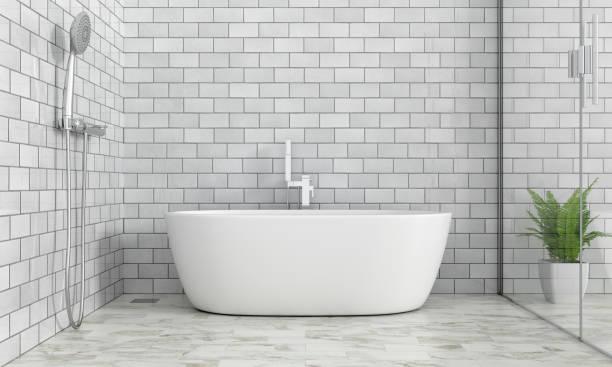
What To Consider When Choosing From Different Types of Bathtub Material
What kind of material makes the finest bathtub? There is, regrettably, no bathtub material that works for everyone. Before choosing the types of bathtub (Learn: How to Choose a Bathtub for Commercial Use) materials, keep in mind some of the most crucial factors, including the ones listed below.
Durability
Throughout their use, bathtubs endure a variety of chemicals and physical forces. As a result, one of the main issues with bathtub materials is durability. Choose a bathtub with the best quality.
Installation
The plumbing and sewage systems in a home could have particular restrictions or prerequisites for a secure installation. Not every expert is qualified to install any tub in a house properly.
With the help of a professional, homeowners can make sure that the plumbing and sewage systems in their homes are being installed using the appropriate supplies and personnel.
Cleaning and Maintenance
Every bathroom component, including the bathtub, needs regular cleaning. The choice of bathtub material may be influenced by the various cleaning requirements of each material.
Heat Retention
How long a tub can maintain warm water depends on its heat retention. A material that can keep the water warm for a long time is necessary for those who enjoy soaking for extended periods.

Cost
The choice of bathtub material will be heavily influenced by price. While it makes sense to select the best material at the lowest cost, one should be careful not to opt for materials that are too inexpensive because they can break down rapidly. Choose the one with the best manufacturing quality.
Weight
Every type of tub material has a unique weight. Installation needs can differ, even for tubs that appear to be identical. Where a tub is put will depend on how heavy it is. While choosing a tub placement, take weight into account.
10 Most Trendy Types Of Bathtub Materials
Knowing the advantages and disadvantages of what are bathtubs made of is one of the most excellent methods to decide if the bathtub material is the appropriate choice. Everything about a bathtub, including the installation cost, heat retention, and lifespan, can be impacted by its type of bathtub material.
1. Solid Surface Bathtubs
To add a touch of glitz, get a KKR solid surface bathroom solution. Solid surface bathtubs are made from several synthetic materials using a single, seamless mold. Customers can order a tub in any shape or size to fit their bathroom space.
A bathroom can benefit from the refinement, grace, and elegance of a KKR solid surface bathtub. The materials can have various colors added to them while being manufactured. There are numerous sizes, shapes, and customization choices for KKR solid surface tubs.
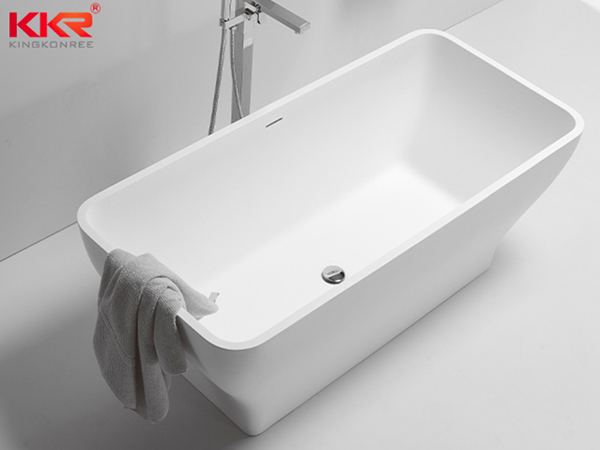
Bathtubs built of solid surface is resistant to mold, mildew, and germs because it is antimicrobial. When properly cared for, KKR solid surface baths will last a lifetime. Unlike other bathtub materials, they usually won’t fade, crack, or have problems from normal wear and use.
Pros:
- Hygienic and non-porous
- Easy to clean
- Several color choices
- Large selection of sizes and shapes
- Quite robust
- Holds its heat
- Sustainable and recyclable
Cons:
- Challenging to source
- These tubs can be heavy
2. Fiberglass Bathtubs
One of the least expensive bathtub material types is fiberglass. It is made of reinforced plastic poured into a mold shaped like a bathtub, covered with resin, and polished. For instance, fiberglass is prone to scratches and color fading after continuous use and extended sun exposure.
Although a fiberglass bathtub has long-term problems, its appearance is likely attractive, and there are many different types to choose from when designing a bathroom.
Pros:
- Inexpensive
- Not heavy
- Tubs made of fiberglass are simple to install and maintain
- The surface can be fixed
Cons:
- Tubs made of fiberglass can seem unstable
- Material ages and becomes less vibrant
- Easily prone to scratches and cracks
- Brittle and porous
3. Porcelain Over Steel Bathtubs
Next up in this bathtub material comparison is Porcelain. Typically, cast iron or stamped steel covered with porcelain enamel is used to make porcelain bathtubs. Porcelain bathtubs are, therefore, very hefty.
A porcelain bathtub must be cleaned and maintained correctly to maintain its aesthetic appeal. When moving and installing these tubs, extreme caution must be exercised to prevent scratches.
Pros:
- Compared to fiberglass tubs, porcelain tubs endure longer
- Constructed of sturdy material
- It has a smooth surface and an excellent shining finish
- Easy to clean
Cons:
- Surfaces easily crack
- Extremely heavy
- Steel left outside may corrode
- Poor retention of heat
4. Acrylic Bathtubs
Acrylic materials are what are tubs made of generally. Clear plastic is used to make acrylic tubs, which are vacuum-formed and strengthened with fiberglass layers to boost durability.
While acrylic bathtubs are ideal for many homes, they might not be the best option in every circumstance. Because acrylic is a pliable material, there is a vast range in the forms, sizes, colors, and styles of these bathtubs.
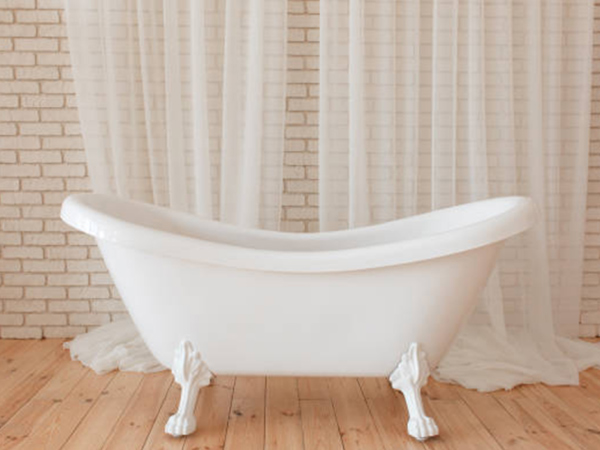
Pros:
- Installation is simple
- Stronger than other bathtub materials by a wide margin
- Resistant to chips and cracks
- Heat-retention
- Using a washrag and home cleanser makes cleanup simple
Cons:
- Scratching or staining of the surface
- Greater susceptibility to abrasive cleansers
- Costlier than fiberglass
- It seems less durable than some other tub materials
5. Cast Iron Bathtubs
A cast iron bathtub is a heavy-duty, incredibly robust piece that can last for decades if not generations. It can add beauty and practicality to the bathroom’s ability to retain heat. Cast iron bathtub materials are fine for some homeowners but are not ideal for others, much like other tub materials.
Undoubtedly, the most significant disadvantage of a cast iron bathtub is its weight. It is one of the most long-lasting bathtub materials, despite the price.
Pros:
- Classic and enduring designs
- Extremely long-lasting and durable
- Low-maintenance
- Resistant against chips and scratches
- Choices in color
- Heat retention
Cons:
- Heavy to the point where additional support may be needed
- High cost
- If enamel is cracked or chipped, it could rust
6. Cast Polymer Bathtubs
Cast polymers, like cultured marble, granite, or onyx, can be fragile and develop flaws that cannot be repaired, although they are often inexpensive and simple to maintain.
Manufactured natural stone and solid materials, such as resin and limestone substance, are included in cast polymer as parts. Usually, a gel coat is applied on top to complete the bathtub materials.
Pros:
- Diversity in design
- Smooth surface
- Simple to clean
- Stain-resistant
- Reasonably robust
- Retains heat
Cons:
- It can be pricey
- Sometimes fragile
- Cracks beyond repair
- Requires heavy care
7. Ceramic Tile Bathtubs
In vintage bathrooms, the ceramic bathtub is frequently employed as an accent item. It can either be composed of glossy, smooth ceramic or have ceramic tile applied to the outside of it.
With proper maintenance, this bathtub material will maintain its attractive appearance and ease of customization while also being comfortable. Its reduced availability, higher cost, and challenging installation are its drawbacks.
Pros:
- The price may be lower
- A variety of sizes, including customizable possibilities
Cons:
- It needs upkeep for the grout that holds the tiles together
- A rough surface is offered by tiles
8. Cultured Marble Bathtubs
Cultured marble, a synthetic material created by combining natural marble with resins and dyes, is used to make cultured marble bathtubs. The substance is inserted into a mold of any shape, which can be covered with a gel.
These tub materials give customers a more affordable choice while still giving them a nice bathtub. Customers have the freedom to design a unique bathroom bathtub masterpiece since each cultured marble tub is created to order.
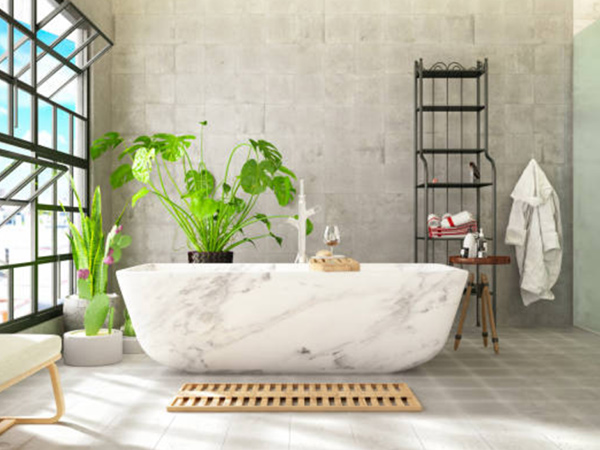
Pros:
- A vast selection of sizes, colors, and styles
- Long-lasting and durable
- Heats up evenly
Cons:
- A pricey alternative
- It can be unavailable
- Heavy
- If not kept up, it will fade
9. Stone Bathtubs
Bathtubs made of stone bathtub material types are stunning and opulent, making a solid first impression. These bathtubs, carved from granite, marble, and other materials, are excellent heat retainers.
Its extended longevity is a result of its robust construction, which makes them resistant to many different types of harm. Most minor damage can be fixed by homeowners using an abrasive pad. Homeowners can create a nature-inspired bathroom design with stone textures.
Pros:
- Both timeless and beautiful
- Dependable and robust
- Very cozy and long-lasting
Cons:
- One of the priciest bathtubs available
- Really hefty
- Additional support is needed
- High level of upkeep
10. Wood Bathtubs
Wooden baths are favored in a variety of settings because they are thought to be excellent soaking tubs. They have a function in a household and are versatile enough to go with any theme. Wood has a greater capacity than other materials to maintain water temperature for long periods, but it also has drawbacks.
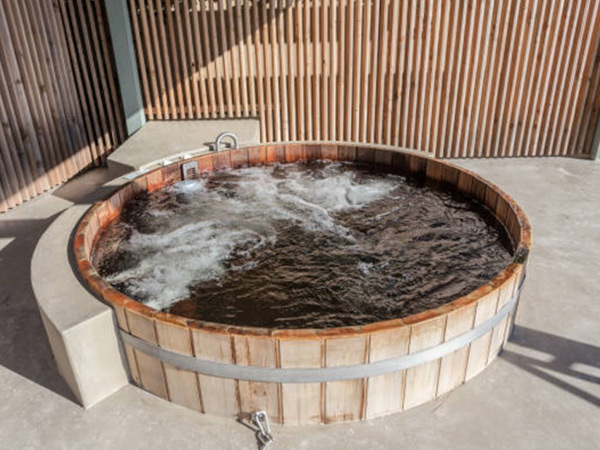
Pros:
- Beautiful and exceptional by nature
- Customizable type of bathtub material
- Ideal for use in a natural setting
- Wood holds heat for a significantly longer period
Cons:
- It has a high price attached
- It needs to be maintained to stay in good shape
High-Quality Solid Surface Bathtub Manufacturer: KKR
The world’s leading manufacturer of bathtubs, KKR, offers the most excellent solid surface bathtubs and other accessories. KKR was set up in 2000 with a 15,000 manufacturing factory. KingKonree offers more than 80 contemporary solid surface bathtub models. The solid surface bathtub has a 10-year warranty and is constructed from premium raw materials.
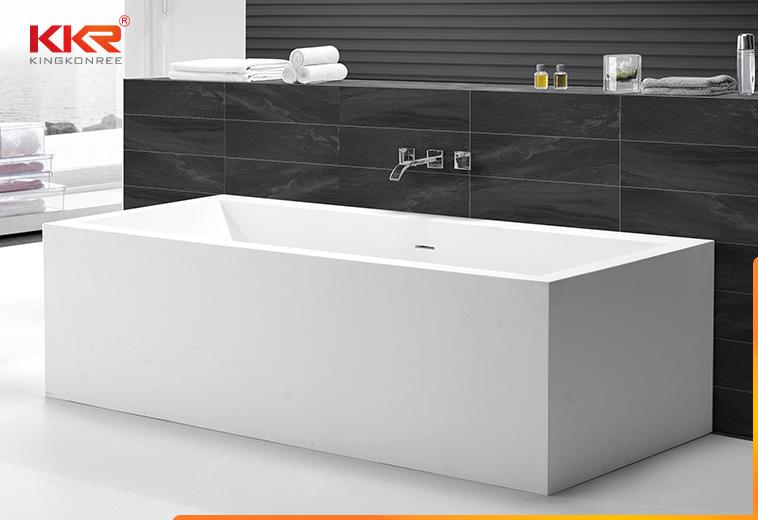
They manufacture various designs: freestanding bathtubs, oval bathtubs, mini bathtubs, and square soaking bathtubs. The KKR solid surface material is a preferred option for bathtubs all around the world due to its luxuriously smooth texture and heat-retention capabilities.
Conclusion
There are numerous material choices for bathtubs. While selecting a bathtub material is a difficult decision, being aware of the most common bathtub material kinds will help you select a material that will appeal to clients. Consider the budget first. Choose a material that will endure the longest, like a solid surface.
Contact KKR to get your hands on the best quality solid surface bathtubs in various designs. We offer the best quality, durable, and long-lasting solid surface bathtubs for an affordable price.



